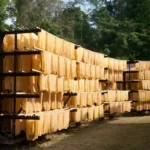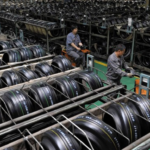Natural rubber is harvested from the Hevea brasiliensis tree and processed into various grades, such as RSS (Ribbed Smoked Sheets), TSR (Technically Specified Rubber), and Latex Concentrate. Its natural properties make it indispensable for tire manufacturing, industrial belts, medical gloves, adhesives, and footwear. The automotive sector alone consumes over 70% of the world’s natural rubber for tire production, making it the industry’s primary driver.
Global Trends in the Natural Rubber Industry
Rising Demand from the Automotive Industry – With the expansion of the global automotive market, especially in emerging economies, the need for high-performance tires is increasing, boosting natural rubber consumption.
Sustainability and Eco-Friendly Sourcing – Consumers and businesses are shifting towards sustainable and responsibly sourced natural rubber to reduce environmental impact and promote ethical labor practices.
Technological Advancements in Rubber Processing – Innovations in synthetic rubber blending, improved processing techniques, and recycling are enhancing rubber durability and reducing production costs.
Price Fluctuations and Supply Chain Challenges – Natural rubber prices are influenced by factors such as weather conditions, geopolitical instability, and demand-supply imbalances, leading to market volatility.
Government Policies & Investments – Countries like Thailand, Indonesia, and Malaysia (top natural rubber producers) are investing in sustainable plantation practices, research, and development to improve global competitiveness.

Challenges & Opportunities in the Industry
Climate Impact on Production – Weather changes significantly affect rubber plantations, leading to fluctuating yields and supply constraints.
Competition from Synthetic Rubber – Although synthetic rubber is widely used, natural rubber remains the preferred choice for high-performance applications due to its superior flexibility and resilience.
Sustainable Rubber Initiatives – Companies are increasingly adopting eco-friendly rubber production, including forest-friendly plantations, reduced chemical usage, and recycling programs to ensure long-term sustainability.

Future Outlook
The natural rubber industry is expected to grow steadily as demand from tire manufacturing, industrial applications, and medical sectors increases. Innovations in processing technology, sustainability practices, and supply chain improvements will shape the future of this industry. Governments and businesses must work together to address challenges while capitalizing on opportunities for a more resilient and environmentally friendly rubber market.





